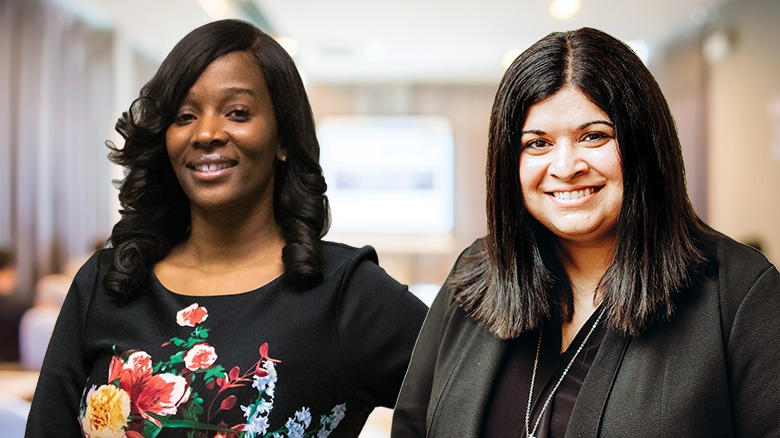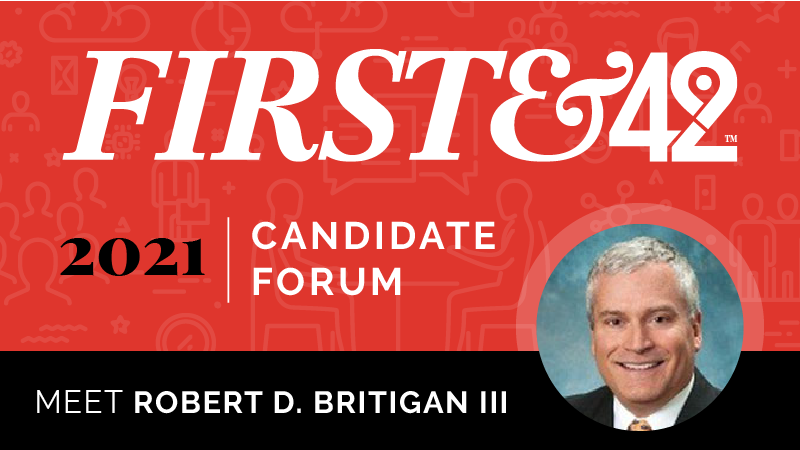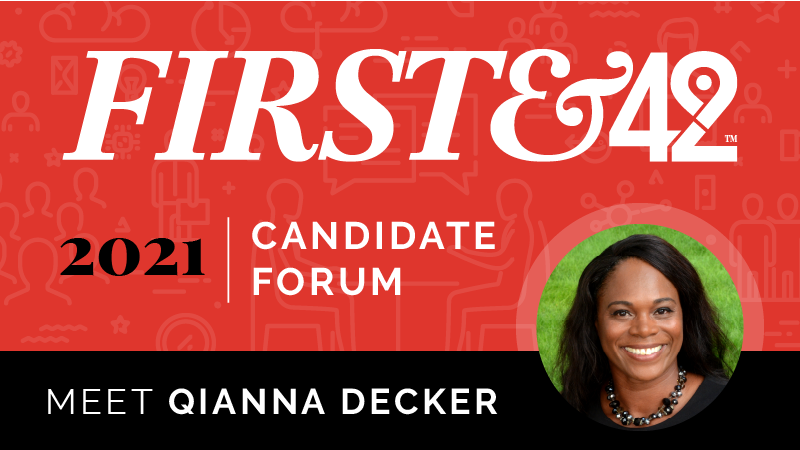The 269 MAGAZINE team sat down with two local leaders to talk trust, team development, emerging leadership, and more.
Cyekeia Lee
Director of Community Collaboration AT the Kalamazoo Promise
Liz Semaan
Executive Director AT Bronson Health Foundation
—
What does a great leader look like?
Lee: A great leader is someone who includes the input and advice of their team members. I’ve always liked a democratic leadership style. A great leader is willing to listen to those who are closest to them and who can help inform and make decisions. An example is the great servant leadership and honesty of Martin Luther King Jr. He served and brought others along with him. When I think about some of the best pictures of Dr. King that I’ve seen, it’s always been the ones of him arm in arm with a bunch of people on the front lines.
Semaan: A great leader has integrity. They are someone who is obviously learning and accountable for their actions. For them, the buck stops “here.” They are really accountable for the actions of their team, as well.
How do you develop team members?
Lee: I believe in individualization. I am technically a therapist by trade, so I pay a lot of attention to people. Once I figure out an area that somebody wants to grow in, I try to find a seat at that table for them. I then tailor things to them as opposed to assuming that they want to learn some specific thing from me. It’s important not to force someone to become what you want them to become—let them come into their own.
Semaan: Within Bronson, we are a small team of 10 to 11 folks. We are able to do staff development trainings on a quarterly basis with facilitators both from inside of our system and within the community. We focus on cultural competency, equity, and strengths, and how we can apply those within our team in our everyday work.
How are you actively becoming a better leader?
Lee: I journal a lot and write letters to my future self. I date them a month out and write things to myself like, “Hey, here are some things that I hope you tackle in the next couple days or that I want you to overcome.” I’ll forget about them. When I open the letters a month later, I think to myself, “Oh my goodness. We did these things!” I also listen to audiobooks when I first wake up so that I have positive thoughts and energy that set a tone for the rest of the day.
Semaan: I take advantage of the professional development opportunities that Bronson offers. I read books that are very specific to inclusion and diversity, short stories that spark conversations, articles on philanthropy in the healthcare industry, and stuff on leadership. And, I am super fortunate to have mentors and coaches that I’m close to and whom I can lean on. It also helped to be a mentor with Southwest Michigan First’s First 50 program. It made me more conscious about what I’m doing as well.
How do you establish trust?
Lee: By listening. Actively listening. Listening not to react but listening with intent. I really try to listen to someone’s needs and, in turn, hope that they’re listening to me. I’ve found in the past that [I’ve become frustrated when] I’ve not had people listen to me. So now, when I interact with people, I tell myself that I need to “start by listening.”
Semaan: By being transparent and authentic in the relationships that I’m building with those around me. Even when I can’t share certain information, I am still able to acknowledge the climate or culture that’s happening at that time.
What signals “emerging” leadership in others to you?
Lee: Innovative thoughts and ideas. I love when I see people who think outside of the box and are self-starters. That’s when I know I can give somebody a task and they will just take off with it.
Semaan: When somebody brings me a problem with the recommended solution. It’s when someone says, “I have an issue. I’ve thought it through. This is what I think we should do, but I need your guidance and support.” It’s also when I notice that they are willing to do the work and support and celebrate their teammates.
How do you curate culture?
Lee: We have playdates as a team. We’ve attended sporting events, held a soul food soiree for Black History Month, and filled out brackets for March Madness. We’ve played basketball and flipped up the scoreboards so people couldn’t see the score to keep the competition friendly. Our playdates are a mix of work and play. During them, you get to learn more about your teammates while having fun. On our calendars, we call it a “promised play date.”
Semaan: We exemplify what work-life balance looks like and what flexibility looks like. We’re in a stage where 8:00 a.m. to 5:00 p.m. doesn’t always work for everyone, especially those with young kids. We provide flexibility for our team to decide what their strategic priorities might be for that day or that week. This might mean our team members are working at 10:00 p.m. because they went on a field trip that morning. That decision is for them to manage. By allowing work-life balance, we have promoted a supportive culture and developed a team that’s committed to the work that we’re doing. We recognize the privilege that we have to do this. If you go across the street [to the hospital], they don’t have that privilege. They have to take care of patients [24/7]. I know that flexibility is not allowed everywhere. We’re fortunate.
What are your top two leadership goals for the coming year?
Lee: I’d like to work on community collaboration to increase the number of partners with whom I have deep relationships. For example, when we attend events, our team needs to sit down with our partners to understand what their organization needs and likewise help them learn what we need so we can work better together. And I’m trying to be immersed in the community to engage students and families more. I want to make our community more inclusive.
Semaan: I’ve been working professionally and personally for the last two years in Bronson’s cultural competency work. Now, I’m starting to get our team involved in understanding what cultural competency is and how we can be part of the solution when it comes to institutional racism and unconscious bias, especially in our healthcare setting. And, I really want to be more present with my team and family. I can get easily distracted with my workload and everything that’s going on.




